I make my own natural defoamer
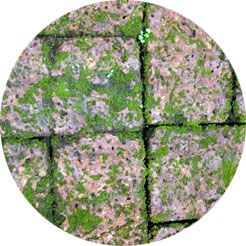
If there is one thing that always comes back at the beginning of spring, it is the greening of our outdoor surfaces by mosses, lichens or fungi. Something we could do without but which is inevitable at the end of winter. These green deposits love humidity and they develop in the least sunny places. This phenomenon is all the more present if you live in a rainy region or if a part of your house or your land is shaded.
What causes the appearance of moss?
As mentioned, moisture is one cause, but it's not the only one. Mosses like to grow when the soil is of poor quality. So other plants grow poorly and mosses, being more adaptable than most plants, move in to fill the empty space. Mosses are not the problem, they are the symptom.
When you see moss in your lawn, roof, deck, flower bed or driveway, five factors may be at fault :
1 - Very shady location
2 - Very poor soil
3 - Soggy soil
4 - Densely compacted soil
5 - Very acidic soil (pH less than 5.5)
It is often a combination of these factors that hinders the growth of other plants so much that it allows mosses to penetrate. Perhaps the soil is compacted and shaded, or poor, soggy and acidic. Some of these factors are easy to check. You can tell by eye if the location is shady and if you weigh down the soil and water comes out, it is soggy. Try pushing a pencil into the soil: if it's difficult, it's too compacted. As for whether your soil is really acidic or poor, only a soil test will tell you.
A surface more than concerned : your roof
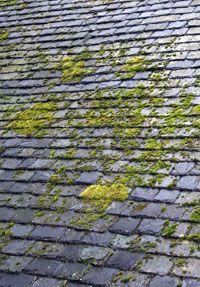
Beyond the aesthetic aspect, green deposits can represent a risk for your home. First and foremost: your roof. Their presence on your tiles or slates compromises the impermeability of your roof and makes it sensitive to frost, bad weather and infiltration. Your tiles become more and more porous, fragile and brittle. When the cold weather returns, the waterlogged tiles or slates crack and cause leaks. That's why it's important to remove green deposits from your home without delay. A well-maintained roof is stronger, more waterproof and more aesthetic. Regular de-mossing will extend the life of your roof and the health of your home.
When your terrace, driveway and paving stones become green
The terrace or balcony remains an important living space in a house. Used all year round, to share a meal, to play or simply to go to the garden, it must be perfectly safe. However, mosses make terraces and walkways slippery because they soak up water, preventing it from draining properly. Moss can also get lodged between the tiles and deteriorate them. Finally, beyond its appearance, it will give your outdoor surfaces a look that some consider unsightly due to its greenish color (tastes and colors :)).
Rather than resorting to chemical algaecides or fungicides, try mechanical solutions and natural products.
We have selected 4 common products that, when added together in warm water, will give very good results against the greening of your surfaces.
Citric acid : It is obviously found in lemons and other citrus fruits. To obtain a production in quantity and quality, researchers have developed an industrial process. The citric acid that we use every day comes from the action of a mold (Aspergilius Niger) on a sucrose base. It has an effective drying action on moss.
Baking soda : Already used in the time of the Egyptians, baking soda continues to amaze us every day. We have to admit that it offers countless possibilities for daily use! Combined with citric acid, it will complete the anti-foaming action. It is also effective alone on lichens by sprinkling directly on the targeted surfaces. Don't be surprised by the small effervescent chemical reaction when bicarbonate, citric acid and water are mixed. This is perfectly normal! This is an acid-base reaction between the 2 ingredients. The reaction of an acid with the bicarbonate of soda produces carbon dioxide, which is a gas and will therefore escape in the form of small bubbles, this is the effervescence! The other products of this reaction are water molecules and sodium citrate.
Citric acid and baking soda should be mixed with a vegetable oil (sunflower oil is chosen) and Tea tree essential oil.
The vegetable oil will have an asphyxiant effect. As for the Tea tree essential oil, its broad spectrum antifungal properties will increase the anti-foaming effect.
To facilitate the mixture, the trick is to make the preparation with warm water.
To make your own natural anti-foaming agent, 100% effective and inexpensive, nothing could be easier! Let's start with a 5 liter finished product. This will allow you to cover a nice surface already. You can multiply the proportions if you want to treat more. In a bucket (of warm water, that will facilitate the mixture), pour 300 grams of citric acid then 75 grams of bicarbonate of soda. To this, add 2 tablespoons of sunflower oil. The final touch will be to add 7 drops of Tea Tree essential oil to the bucket. Mix together and then transfer either to a small 3 to 5 liter 500 ml sprayer (depending on the surfaces you wish to reach).
Spray directly on the surfaces concerned, making sure they are dry, this will work much better. This preparation will dry moss, lichen and fungus in an ecological and natural way in a few days. However, like any anti-foam product, granite, marble or terracotta can be discolored by the mixture. You are therefore warned!
Let the product work for at least 3 days. You will see that the moss on your roof, terrace, driveways etc. will fade. Finally, clean with a broom and rinse with a jet of water.
When to apply this mixture ?
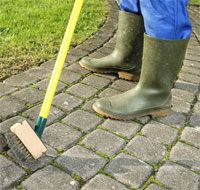
The application of an anti-moss treatment can be done once or twice a year. In a country like France, the climate allows us not to need to plan more cleaning sessions (depending on the region). A significant comfort! Before you start, whatever the season, watch the weather and make sure you don't have 2 to 3 rainy days after your cleaning! This would eliminate the product and make your treatment completely obsolete! Ideally, find a weather window of 2 to 3 days without rain in front of you. Also avoid periods of high heat. The product will tend to evaporate too quickly and will inevitably be less effective.
In spring
Ideally, clean and apply your anti-foam product in the spring. This will allow you to see any damage and aggression caused during the winter so that you can repair any damage. In addition, surfaces treated in the spring will allow you to enjoy cleaner spaces in the summer, which is aesthetically pleasing.
In the fall
It makes the most sense to wait until the trees have lost all their leaves. This way, before applying a treatment, you can clean up all the accumulated debris such as dead leaves, lichens, mosses, fungi, molds, etc. You will prevent this green waste from settling and rotting on your surfaces, generating more moss before winter.
Beware of bleach
To get rid of green deposits, whether on a roof, a terrace or a wall, it is recommended to use a solution like the one mentioned above or a specifically adapted commercial product. But above all, avoid bleach or products containing it: although it has an immediate visual effect, bleach damages the supports and makes them more porous and discolored, accelerating the return of green deposits. You will therefore obtain the opposite effect of what you want. Bleach is a very aggressive product. As such, bleach is effective in removing moss. But not only that. Its chemical properties also result in the death of all other vegetation around it, from grass to plants. Bleach pollutes soils and subsoils as it is absorbed by the earth. Groundwater in the subsoil can be impacted.
Other anti-mousse tips
1. Use a natural, ready-to-use anti-foam product
We have a very effective one for you! The Bionetal green deposit express cleaner. Its concentrated formula allows to act on green deposits, lichens, algae and this on roofs, facades, walls, terraces, pavements, pool coping ... Certified organic by Ecocert, it contains no acid, bleach or chlorine.) It is effective from 1 hour after application. It is possible to recover rainwater from roofs. A real magic product and 100% natural. You can use it concentrated or diluted according to the degree of soiling and the time you are prepared to wait to eliminate all traces or deposits. It is available in 1 litre and 5 litre containers. To find out more about this defoamer, follow this link or click on the thumbnail below.
2. Removing moss manually
We often tend to forget that a good mechanical action is worth all the products. It just takes a little ... elbow grease! If the moss is thick and forms clumps, you should start with a mechanical cleaning. Remove the moss by scrubbing the floor vigorously with a broom or stiff brush, or scrape it off with a spatula, taking care not to damage the surface, especially if it is wooden. In some cases, the use of a knife will also help to remove the more difficult moss and lichen. Finish by sweeping the surface. In any case, the surface must be clean and dry before applying any anti-foam product. So this manual cleaning step is still essential.
3. The natural acidity of lemon
You may not have known it, but lemons are excellent for home maintenance, including outdoor areas. Its natural acidity, citric acid, removes moss without affecting the materials or the environment. Diluted with a little water, it can clean all types of surface: stone, wood, PVC, canvas, etc. Leave it to work for a few days, then rinse and brush. During the pause, the foam dries out and eventually disappears thanks to the lemon. You can also use citric acid directly to make it easier. Presented in powder form, the application is as simple as squeezing lemons on your terrace. Reserve the lemons for summer cocktails !
4. Baking soda, an effective solution against lichen
Baking soda is one of those products that could be called "miraculous". That's why it's part of the recipe we suggest above. Sometimes it can even be used alone to overcome greening. Pour hot water into a bucket and add baking soda at a rate of 2 tablespoons per litre of water. Apply to your terrace and leave for 30 minutes. Then scrub with a broom and rinse with water. This will remove the moss from your tiles.
5. Dishwashing liquid and black soap to fight moss
The method consists of soaking your broom in a bucket of water with a little washing-up liquid and black soap, and rubbing the surface. Repeat the process wherever necessary. Leave for half a day and then brush off the moss. Finally, rinse with warm water.
6. Cooking water, an original anti-foaming solution
Pasta, rice, potatoes ... The cooking water of these foods is rich in starch and is therefore a valuable anti-foaming agent. In addition, the heat of the cooking water increases the effect by scalding the food. If you are a regular consumer, imagine the square meters you will be able to treat in a totally ecological way! Pour hot water from cooking potatoes, rice or pasta over the green moss. The more starch in the water, the more effective it will be. This solution is extremely simple, quick and effective and can be used on a daily basis.
7. A few packing boxes or pieces of carpet
It's not the most aesthetic thing, but this method has proven itself: In the absence of light, the green areas will wilt in a few days. To do this, cover the mossy areas of the terrace or driveway with cardboard or carpet and secure them with several stones to prevent them from flying away. This method is obviously more complicated to use on a roof... although!
8. Salt to combat moss on the terrace
This can only be used to eliminate moss in paths away from the plants. Dilute coarse salt in water, spray the solution and rinse quickly. Another moss-fighting option: dig slightly at the root of the moss, fill the hole with coarse salt and rinse quickly.
9. Basil essential oil to get rid of lichen
Basil essential oil has weed-killing and fungicidal properties. Put a few drops in a bucket of water with liquid soap (black soap). Spray the solution on the moss and leave it to work. Brush it off. A good way to remove moss from driveways.
10. Use white vinegar to remove moss
Use it neat, sprayed directly on the root, or diluted by half with hot water. The result is even more effective in sunny weather. It is perfect for removing moss from patio tiles.
11. Waterproofing, a preventive solution against moss
Use a waterproofing product for outdoor floors, chosen according to the materials of your terrace (stone, wood, etc.). They protect against moss, but also against stains, acid rain and frost, and let natural materials breathe.







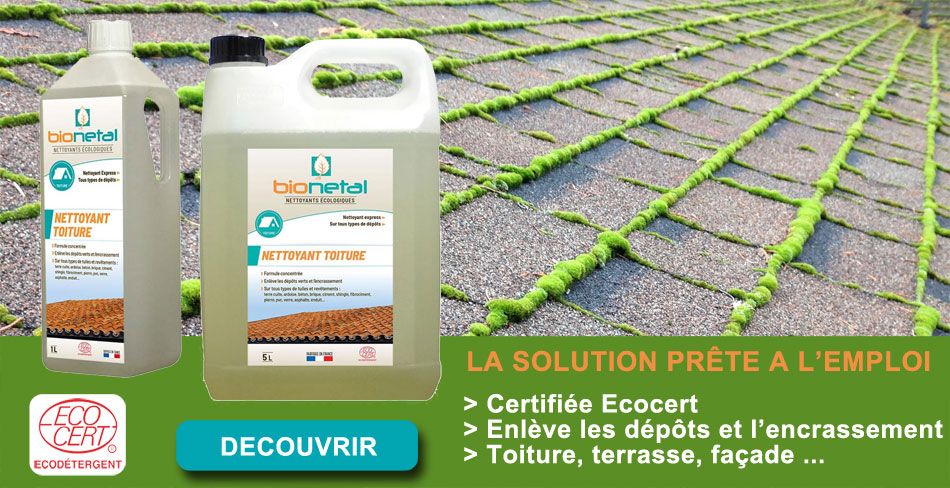
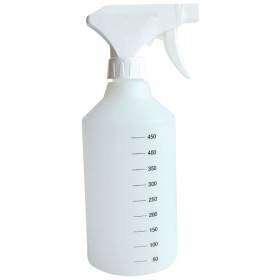
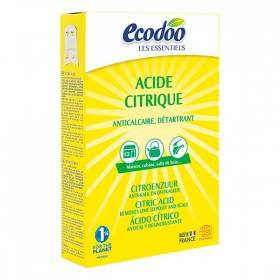
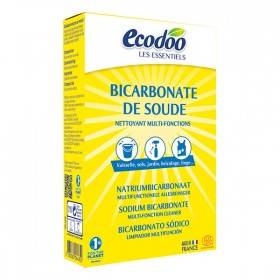
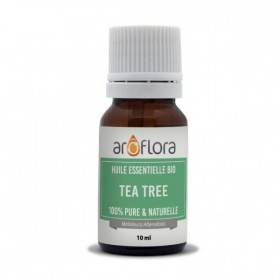
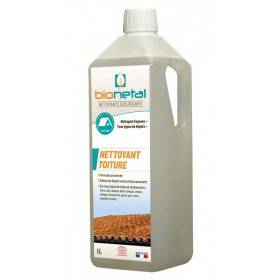
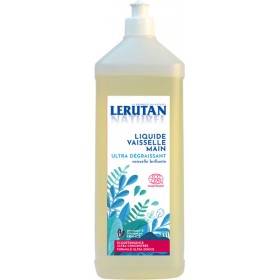
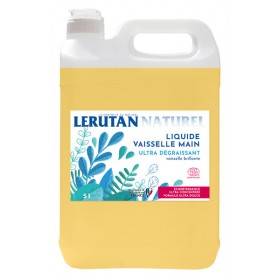
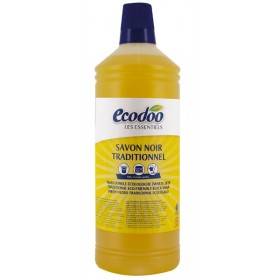
Customer reviews
Très bien !
XX
Commande et livraison rapides!<br /> Rien à dire, c'est parfait !
Christine
Après 2 traitements à 3 jours d'intervalle, j'ai réussi à éradiquer toutes les punaises de mon canapé. Produit hyper efficace que je recommande vivement.
Emmanuelle
Bonjour, colis bien emballé arrivé sans encombre, démarche écolo bien ancrée et petit mot perso. Merci à l'équipe de Penn'Ty Bio.
Sofi
Très satisfaite par Penn ty bio. En effet, suite à un produit défectueux ( housse matelas) , j'ai aussitôt reçu un bon de retour pour renvoi gratuit en colissimo et ai reçu la nouvelle housse dans les 48 h, avant même le renvoi de la première housse. Merci pour la réactivité et la confiance de cette entreprise.
dominique B.
merci pour le suivi de ma commande et les mails par lesquels vous m'avez tenu informée.
Zoé
Je vous remercie beaucoup de m’avoir fait profiter d’un acheminement par Colissimo alors que rien ne vous y obligeait, sauf votre conscience professionnelle, chose rare de nos jours et qu’il ne faut jamais manquer de souligner.
Cécile
Produit conforme aux attentes.<br /> <br /> <br /> <br />
Alain
Comme d'habitude, envoi soigné, produits performants, Merci.
XX
Bon produit , envoi rapide.<br /> <br /> <br />
Christine
Excellents services, très serviable
XX
Marie Aline Roux
J'ai bien reçu le colis sans aucun problème. Merci pour la rapidité et le sens du service.
Nicolas
Produit de qualité conforme à mes attentes, envoi rapide et soigné, très bien.
Anne
Excellent service après vente après un problème d acheminement de colis par la Poste. Une relation client de très grande qualité. <br /> Cordialement,<br /> <br />
PV
Everything was very nice ! Keep handling your customers likes this!
xxx
Pennty bio prends le temps de renseigner et donne de très bons conseils.<br /> Les produits sont emballés soigneusement et la préparation des commandes hyper réactive. Je recommande les yeux fermés !
Mattloumag
Pour ma part j'ai été satisfaite de la réalisation de ma commande et du délai de livraison. Je recommande votre société.
Nelly
Très bon site. Envoi rapide. Prix moins cher que sur d autres sites. Bravo et bonne continuation.
Camille
I had a marvelous experience with ordering and everything ! Thank you for a great service.
XX
Marie-Noëlle
Livraison rapide et soignée. J'utilise les produits bio qui sont de très bonnes qualités. Un savon m'a été envoyée par erreur à la place de celui commandé et il m'a été remplacé très rapidement. Bravo pour leur réactivité. Je recommande fortement ce site.
Liliane
Efficacité de la livraison , très rapide . Produits livres en parfait état . Très bien emballés . Merci.
Geneviève
Excellente communication, service très rapide (même à l'étranger), emballage parfait ...
Jacques N., Belgique
Client depuis des années Produits de qualités et surtout qualité de service.
XX
Je suis vraiment très satisfaite de la prestation de ce fournisseur : délai de livraison très rapide et emballage des produits réalisé avec un maximum de soin. Bravo !!
Eliane
Bien, la majeure partie des produits sont efficaces. Je connais cette boutique depuis plusieurs années, je recommande ce site.
XX
Envoi rapide et soigné. Emballage ecoresponsable. Je suis ravi d’avoir trouvé des pièces de rechange pour les diffuseurs à huiles essentielles!
Ina L.
Après un souci sur l’article livré, le site a fait preuve d’une excellente communication (simple et efficace par sms) qui m’a permis de me faire livrer un 2nd article par la marque très rapidement. Parfait !
Pierre
Cliente fidèle depuis plusieurs années, je ne peut que recommander ce site. Tout est parfait. Tous les produits au top, rapidité d’envoi, gentillesse, allez y les yeux fermés vous ne serez jamais déçus.
Marité 06
JM
Je vous remercie de votre professionnalisme et de votre réactivité.C'est loin d'être toujours le cas lorsque l'on commande sur internet.
Gaëlle
Très satisfait de Penn'Ty Bio : choix étendu,prix raisonnables délais de livraison rapides.
xx
Toujours aussi "réactif" et efficace<br /> Bravo et merci pour votre professionnalisme.
Annick P.
J'ai enfin reçu le petit colis, hier. Il a mis un mois pour me parvenir, mais vous n'y êtes absolument pour rien, comme je le pensais, il a été mis de côté lors de la grève nationale. Je vous remercie d'avoir fait faire des recherches, j'ai reçu un mot de la poste.
Hervé
très bien livraison dans les délais, colis intact, bon produit.
Martine
produit parfait.
René
Une boutique en ligne, sympa et très réactive. On apprécie surtout la livraison express. Pas besoin d'être américain pour livrer dans des délais de champion !<br /> <br />
Daniel de Paris
Penn'Ty Bio wonderfully served our family in Switzerland so that we could try the range of Totemsavon products, which are such caring, loving, and consciously manifested creations :)<br /> <br /> By allowing a shipment to Switzerland and elsewhere, I am sure so many more people would be able to benefit from the beautifully selected product portfolio in Penn'Ty Bio and all, together, make a conscious leap by using and demanding a way more purer approach to anything we interact with.<br /> <br /> Thank you so so much Penn'Ty Bio!<br /> <br /> In 8 Love We Heart Trust<br /> <br /> Miguel Ángel
Miguel Ángel
Cela fait plusieurs fois que je commande chez Penn'Ty Bio et je suis toujours satisfaite de la qualité des produits et de la rapidité d'expédition. Je recommande ce site !
Ghyslaine
Livraison en temps record à l'adresse indiquée en France puis départ dans l'océan indien. Reception des produits en quinze jours à l'autre bout du monde : ravie. Je vous laisserai les avis produits une fois utilisés. Le site est très bien fait et très agréable à utiliser. Le petit mot à la main dans le colis humanise la transaction, je l'ai apprécié. Je pense que vos produits sont très utiles et je vous souhaite une belle réussite et sur la durée.
Sylvie D.
Merci pour votre démarche si respectueux de l’humain, des animaux et de l’environnement !
A.F
clair net précis. merci
jannick
Bonjour, j’apprécie depuis longtemps votre travail : la qualité de vos informations et des produits que vous vendez.
Frederic
Rapide, sérieux, très bien emballé, un sans faute.Merci.
L.H.
Merci pour votre sérieux et la réexpédition ultra rapide d'un achat non conforme (dont vous n'étiez pas responsable).
Marc
Parfait comme d'habitude
Sylvain
J'ai bien reçu ma commande. Com' dab' , rapidité efficacité ...Merci
Sally
Hyper cher :: très déçue du prix par rapport à la quantité de produit acheté. Sur le site internet, les flacons semblent grands, or pour 80 euros je me retrouve avec 4 flacons de petits produits insecticides... trop cher
xxx
Une utilisation de vos produits a suffit pour nous débarrasser des poissons d'argent. Merci.
Matthieu
C'est vraiment magnifique et ce cadeau a plu, je commanderais pour Noël.
Martine
Juste un petit mot pour vous remercier de votre disponibilité et pour vous dire également que je suis très satisfaite des produits que j'ai acheté, ils sont vraiment efficaces.
Barb.
Merci et surtout, continuez, c'est rare de trouver sur internet une relation aussi personnalisée sur un mode aussi agréable.
Sabine
BIEN,CONTINUEZ COMME çà.
XX
Site très pratique. Commande aisée. Suivi régulier. Délai de livraison respecté. Colis très soigné. Tout est parfait.
Nicole
Un super magasin en ligne, avec plein de produits disponibles.<br /> L'envoi a été très rapide et soigné, avec une très bonne communication à chaque étape. Bref, une adresse à connaitre et à garder ! Merci !
Pab57
Livraison express. Colis toujours aussi bien préparé (cales, flocons, adhésif sur les bouchons qui risquent de couler). Bravo pour votre professionnalisme.
Isabelle
Produit performant et raisonnable au niveau prix. Je recommande
XX
Très contente d'avoir découvert ce site internet ! Du conseil jusqu'à l'achat c'est super. J'étais très embêtée après l'apparition de petit insecte chez nous (des anthrenes) et c'est le seule site internet e-boutique qui a pu nous renseigner dessus et enfin indiquer les produits pour les éradiquer sans pour autant nuire à notre santé (mais en respectant les conseils d'utilisation bien sûr). J'ai reçu ma commande rapidement, et avec surprise un petit mot de remerciement personnalisé avec mon nom dessus. Des détails qui au finale font la différence. Un service de qualité rien à dire. Merci !
XX
Très bon site, très sérieux je recommande, produits de qualité et service après vente au top, de plus livraison des plus rapide et produits très bien emballés, tout est parfait
virginie
Louise
Merci pour votre efficacité et votre gentillesse, commande, livraison, petit mot agréable, tout était parfait !
Sylvie
Parfait. Rien à redire. Extrêmement efficace.
Quentin
Personne disponible, de très bon conseil suite à des punaises de lits dans mon habitation, les produits sont efficaces car depuis aucune punaises et la vie à repris son cours ... merci pour tout
Nathalie
Maryse
Envoie soigné et rapide.<br /> Merci pour le petit mot à la main.<br /> Très appréciable.
XX
Très satisfaite du produit.Rapidité et emballage très soigné.SERIEUX.
MARLENE
Commande bien reçue;je suis tout à fait satisfaite;à bientôt
Sonia
Bons produits conformes à mes attentes et livraison au top. Je recommande vivement.
Chantal P.
Les produits commandés sont conformes à mes attentes. Quant à l'accueil au téléphone, il est parfait et nous avons toujours trouvé un terrain d'entente. Je fais confiance à Penntybio.<br /> Merci.
XX
comme toujours excellente réactivité, livraison très rapide et qualité produits TOP. Merci pour votre compétence.
Annick P.
Livraison efficace et bon contact oral avec mon interlocutrice.
Maussane
Ma commande s'est déroulée sans aucun problème avec une livraison rapide et soignée. La satisfaction est au rendez-vs ! Continuez ainsi ! Merci et cordialement !
Etoile 07
Site intéressant proposant de bons produits, attractifs et respectant la nature. Le regret c'est le prix de certains articles.<br />
Catherine
Excellents produits. Excellent service.
James T
Une entreprise fiable, efficace, de confiance, chez qui je recommande de faire ses achats.
S.
Un grand merci pour votre offre et votre professionnalisme. Pour un service en ligne, vous savez vous rendre proche de nous. Bravo et "suerte" !
Pierre M.
Un grand merci pour votre professionnalisme et la qualité de vos produits. Longue vie à votre site.
XX
Juste un petit mot pour vous remercier du message accompagnant mon colis ! Je croise les doigts pour que les produits marches mais entre-temps, je voulais vous remercier et en profiter pour vous souhaiter à mon tout un joli printemps.
Rose B.G
Merci beaucoup le colis est arrivé à la poste hier et je te retire aujourd'hui Merci pour votre efficacité et votre rapidité
Ingrid
Un grand merci pour la qualité et la rapidité de votre réponse.
Simon
ANNE
Merci à Penn'ty bio d'avoir garder beaucoup de produits de la marque Lerutan et pour le sérieux dans la préparation et l'expédition des colis. Je recommande.
SR
Sav rapide et disponible. Au top
Severine
Très bons produits efficaces.
XX
Alex
Envoi très rapide et bravo pour votre site de reconnaissance des insectes nuisibles.
Brice
Très réactifs entre la commande et la livraison. Je suis toujours satisfaite de mes commandes soigneusement emballées !
France L B
Commande bien reçue. Je suis tout à fait satisfaite. A bientôt.
Tania
Client depuis plus de 10ans. Toujours satisfait du matériel propose. Boutique sérieuse prix compétitifs livraisons et suivis rapide.
XX
Les produits achetés sont excellents. Ils répondent parfaitement à ce que je cherchais. Bravo pour votre site
Michel
Tout à fait satisfait de la qualité de la livraison ainsi que du produit commandé.
Régis
J'ai été TRES bien conseillée lors du contact. Produit naturel donc c'est parfait.
Lilla
accueil téléphonique personnalisé réactif compétent et bienveillant, livraison rapide et conforme. BRAVO merci pour la qualité de votre travail
Annick
Bon produits et service !
Rose-Marie
Envoi rapide et soigné, produits efficaces et réponse rapide à mes questions. Je recommande.
xx
Content des produits achetés, reçu rapidement et bien emballé. Merci.
XX
Très satisfaite. Merci.
CM
Site sérieux, proposant de bons produits, efficaces en particulier sur les punaises de lit, fléau actuel. Merci car entre les produits et les housses de matelas nous avons réussi à les éradiquer dans deux maisons à deux ans d intervalle. <br /> Bravo aussi pour la livraison la plus écologique possible.
L.C
Site internet complet, beau et facile d'utilisation<br /> Commande complète et correcte.<br /> Commande emballée a la perfection avec du matériel recyclable, compostable<br /> Délai d'envoi respecté même a l'étranger (Pays-Bas)<br /> Mention spécial pour le petit mot personnalisé ++<br /> On sait pourquoi on commande chez Penntybio depuis 10ans :)<br /> Bonne continuation
Jennifer A.
Très satisfaite des délais, les produits sont bien emballés et le petit mot sympathique est fort agréable!<br />
Sylvana
Parfait ! Envoi rapide et produits de qualité. Merci pour le petit mot. Je suis très satisfaite !<br />
Julieanaïs
Très bons produits, service rapide et de qualité, rapport qualité/prix intéressant. Je recommande vivement.
Alain
Livraison très rapide et produits intacts à l'arrivée grâce à un emballage impeccable.
Etta
Merci et bravo pour la qualité des produits et du service toujours aussi efficace et performant.
Annick P.
Service au top !!!<br /> Colis reçu très rapidement avec un petit mot manuscrit me remerciant de ma commande et de la confiance que je leur ai témoigné <br /> Suffisamment rare pour être signalé <br /> Je vous encourage toutes et tous à les soutenir en passant commande chez eux!!!!<br /> Longue vie à Penn’Ty Bio !!!!<br /> Ils le méritent
Pierre-Steph
Commande reçu très correcte, très bon matos, encore merci et bonne continuation.
Dominique et Monique A.
Commande reçu en 2 jours, impeccable. Tous les produits emballés avec le plus grand soin, petit mot personnalisé! Et encore un petit savon bio au parfum délicieux comme cadeau!! Merci Penn'Ty Bio !!
Orchidée
Bons produits. Fonctionnent très bien.
xx
Prix intéressants. Expédition super rapide à bon prix. Et tout ça de façon agréable !
Alexis M.
en comparaison d'autres produits employés précédemment, je trouve les vôtres beaucoup plus efficaces et cela sur le court terme ,disparitions des odeurs en combinant les produits suivant vos conseils .
XX
Pennty Bio? Einfach genial. Super rapide , bon produits, super service-livraisons. Je vais recommander bientot =)
xxx
Livraison rapide et bien emballé. Petit message manuscrit qui fait plaisir :)
xx
Très bon produit facile en entretenir, pas cher.
XX
Excellent!! Commande passée le lundi, reçue le mercredi!!! Les produits sont en plus de super qualité !
MADELINE
Super, livraison rapide, suivi très rigoureux, site de confiance, très sérieux à recommander... Merci pour tout.
Bernard
bravo pour votre réactivité et la qualité des produits
Annick P.
Excellent site d'achat. Très rapide et que de bons produits.
James
Boutique très sérieuse avec un envoie rapide et des produits super efficaces.
XX
Livraison rapide , produits de qualité, je recommande Penn'Ty Bio.
XX
Je suis arrivée sur votre site en cherchant un diffuseur que je viens de commander, mais je voudrais vous dire que votre site est très intéressant, bien fait. Vos dossiers sont enrichissants merci
Joelle
Merci pour cette première commande, envoyée très rapidement, et dans un petit colis, avec frais de port très raisonnables.
Valérie O.
Merci beaucoup pour la rapidité avec laquelle vous m'avez fait parvenir le diffuseur.
Bichette
Merci pour vos conseils avisés. Et merci pour vos produits de qualité.
Loïc
Rapidité de traitement et petit mot avec le colis très appréciable.
XX
J'apprécie depuis de nombreuses années la qualité de vos produits et le sérieux de votre site. Une petite mésaventure avec un diffuseur me permet de vous féliciter pour la réactivité de votre SAV. Bravo !
Thierry G.
J'ai été très déçue de ne plus trouver mon déboucheur dans mon biocoop habituel, et perplexe en apprenant qu'il était remplacé par un produit à base de soude...c'est comme ça que je vous ai trouvé sur internet.<br /> Alors merci pour le dépannage, pour le mot gentil qui accompagnait mon colis , et bravo pour le calage en amidon de maïs compostable!<br /> Bravo pour votre démarche et à très bientôt.
Cécile D.
Beaucoup de soins dans la commande reçue. Je recommande!
XX
Colis très bien protégé service rapide. Merci. Site très sérieux .
Elios R.
Fidèle à votre marque, je tenais par ce mail à vous féliciter vous et votre équipe pour votre longévité. Votre marque est toujours gage de qualité et sérieux.
Céline
Produits facile à utiliser, efficaces et finalement pas plus onéreux, à l'usage que des produits issus de la pétrochimie. Service livraison impeccable. Je recommande +++<br />
XX
Commande reçue rapidement, très bien
XX
Excellente réactivité !!! Produit en stock, commandé le 23 dec à 8h30, recu le 24 dec à 9h30. On peut guère mieux faire ! Super communication avec le vendeur.
Xavier
Site très réactif livraison rapide le produit Stop tique et puce est parfait sauf le pulvérisateur.
Danielle B.
Bonjour Sophie et Quentin,<br /> Je viens de recevoir ma commande et je tenais à vous remercier pour la rapidité de l'envoi, votre gentil petit mot et le petit présent qui sent bon et donne envie. Bel été à vous deux également
Geneviève
Très bien...merci.
Olivier
Cliente depuis plusieurs années. Super service, réactif, cordial. Les produits sont excellents.
Christine
fidèle cliente de Penn'Ty Bio, je ne me fournis que chez eux.
XX
Bonjour. Je souhaite vous remercier pour votre rapidité. Le colis est arrivé en bon état . Les huiles que nous avons commandées embaument la maison. Ce diffuseur est génial.
Christian
Après la découverte des punaises de lit dans 2 chambres de notre vieille maison, j'ai trouvé votre site. le dossier m'a été très utile et je suis très contente d'avoir trouvé des produits moins toxiques que ce que proposent les autres sites de vente.<br /> Je vous remercie d'avoir répondu à mon mail car c'est un peu l'affolement quand on découvre chez soi des punaises de lit.
Françoise S.
Très satisfaite.
Louise
Livraison ultra rapide, bien emballée. Produits au top. Parfait !
Caty
Très bons produits je les recommande.<br /> Merci à Pennt'ty Bio pour tout, aussi bien pour les commandes et les emballages.<br /> Bravo Pennt'ty Bio.
Bernadette G.
interressante. Beaucoup d'articles référencés. Après pour la lutte contre les punaises de lit, je ne suis pas sure de l'efficacité de certains produits. C'est un vrai fléau ces bestioles.
Francelyne D.
Félicitations pour la qualité de votre site & la valeur de ses informations ! Continuez ainsi ! On a besoin de vous !
Ronald
Colis parfaitement emballé et produits conformes. 1 des produits était très fragile et est arrivé en excellent état, merci :o) Pourquoi achetez à l'étranger alors qu'on a de si belle s entreprises en France? Tarifs identiques ou moins chers que chez Amazon ;o)
Stéphane C.
Emballage au top. Livraison rapide et sans dégâts.
xxx
Je me permets de vous écrire un petit mot afin de vous dire que votre site est très bien fait.
Tom
Produit anti puce extrêmement efficace !<br /> Le vendeur a pris une demi-heure de son temps pour m'expliquer absolument tout ce qu'il y avait à savoir sur le produit, de la composition a la mise en œuvre.. Bref au top ! Je recommande donc vivement Penn'ty !
Louis
MOI JE DIS INCROYABLE !!!<br /> Plus que mieux d'une rapidité de dingue ! bravo et le colis impeccable surprotégé.<br /> Que toutes les entreprises prennent exemple sur vous. merci
AURELIE A.
Livraison très rapide et produits bien emballés.
Catherine
1ère commande. Très satisfaite : Colis expédié très rapidement et bien emballé. Merci pour votre sérieux.
Ghyslaine
J'ai toujours été satisfaite de mes commandes chez Penn'ty bio. Rapide efficace. Surtout les caractéristiques des produits est claire et complète. et le site contient beaucoup d'informations sur les différentes gammes. Merci pour votre travail et votre activité.
XX
colis reçu ce jour, merci pour le flacon offert
Andrée
Ravie de découvrir un site qui présente des produits de qualité avec une vraie démarche éco responsable à des tarifs intéressants.
XX
Cliente depuis plusieurs années, j'apprécie toujours ce site. Meilleures salutations.
France
Claudine
Fiable, et très bons produits , Service après vente efficace et sympathique.
Vilma V.
Bon service et bon produits
Odile R
Service de qualité, suivi rigoureux, et rapidité au rendez-vous. Les produits sont très fidèles à leur description et pour un coût serré. A recommander fortement.
JACKY
Une grande compétence, Monsieur Dufil est très professionnel et sait soigner ses clients. Quand à la gamme de produits proposés, elle est parfaite et complète.
Alain A.
j'ai bien reçu la commande et je vous remercie pour votre efficacité.
Margot
Tout est parfait à chaque fois. L'attention portée va même jusqu'au petit message, c'est agréable. Fidèle aux produits et au site plus que jamais.
xx
Bon produit, efficace et laisse une odeur plutôt agréable. Expédition rapide, emballé avec soins. Je recommande
Mary
Envoi très rapide, personnalisé et soigné. Merci
XX
Parfait! Préparation et expédition de la commande hyper rapides. Emballage très soigné (j'ai acheté un produit fragile). <br /> Je suis très satisfaite!
Elise M.
Livraison rapide et avec colis préparé avec soin :)
Florian
Toujours satisfait et pour les prix et pour les produits.
andré a.
Entièrement satisfaite.
Ch. D.
Colis bien arrivé. Emballage remarquable. Diffuseur très joli, très efficace et peu bruyant avec de la couleur qui change. Très satisfaite de la commande.
Sabrina
rien a redire, sauf, le montant des frais de livraison, un peu élevé.
XX
Sav très réactif et efficace suite à avarie durant transport. La livraison du produit en remplacement du colis défectueux à été particulièrement rapide. Merci.
Valérie
Produits conformes aux descriptifs. Délai de livraison respecté. Satisfaite du nébuliseur qui est superbe.
VR
Suite à un précédent message notifiant une erreur de produit à la livraison, Penn'Ty bio m'a fait parvenir à titre gracieux le bon produit. Merci
Martine
Je suis très satisfaite de mon échange avec le service client (personne à l'écoute, de bon conseil). Envoi rapide et soigné, avec un petit mot sympathique de l'équipe, le top!
XX
livraison rapide, produit conforme.Prix séduisant.
XX
Après essais de divers produits, votre insecticide 4J est le seul à être venu à bout des puces ramenées par le chat de la maison. Livraison rapide par chronopost
JEAN MARIE
Les produits ont été très appréciés par la destinataire. <br /> De plus quand on pose une question, on a toujours une réponse, un conseil très rapidement. Merci pour votre réactivité
xxx
Très satisfaite de ma commande. Emballage soigné et envoi rapide. Merci beaucoup pour votre professionnalisme !
Sophie
Produits de bonne qualité, naturels et efficaces, expédition rapide et bien emballée, sav très rapide suite à une erreur de ma part,
XX
Efficacité redoutable. enchanté.
Robert
Je voulais juste vous remercier. J ai reçu mon répulsif " lézards" aujourd'hui, un petit mot super gentil joint à ma commande ça fait plaisir. J espère que ça va fonctionner. Bonne journée à vous et merci.
Cynthia
Merci beaucoup pour votre rapidité et votre professionnalisme.
Julie
Merci pour votre geste que j’apprécie.<br /> Cela fait plaisir de retrouver l’esprit commerçant de proximité chez un vendeur en ligne. Je surveillerai attentivement cette nouvelle livraison.
Philippe
En cette période d'avant Noël, je craignais que me colis arriverais en retard. 48h après mon achat, c'était dans la boîte aux lettres. Du coup, je suis large pour mettre mon achat sous le sapin. Merci à vous
Art4
Livraison très rapide. Notice livrée avec les produits ainsi qu un petit mot très agréable. Produits très efficaces, avec de l huile de coude, on en vient à bout. Le produit concentré nous a permis de tout éliminer. Par précaution, nous avons tout de même utiliser le spray. Dans une pièce, nous avons utilisé le fumigène. Pour les animaux, la mousse semble efficace. Dans quelques jours nous ferons le shampooing et plus tard les pipettes. Mais franchement après avoir utilisé d autres marques qui ne fonctionnaient pas, nous sommes ravies et nous recommandons ces produits. Merci
Virginie C.
Très bonne adresse où l'on trouve des alternative aux produits chimiques notamment contre les insectes. Le service client est également de très bons conseils.
ck
Produits livrés rapidement dans un colis non surdimensionné, les produits sont conformes à la description. Je recommande vivement ce site très bien fait !
Hervé
Très contente de vos produits.
nathalie G.
Très contente des produits de qualités et une commande reçu très rapidement. Merci
PATRICIA A.
Livraison très rapide. Bravo pour la réactivité
François
j'ai reçu mon colis aujourd'hui, merci c'est très rapide et sérieux.
Clara
Tout est parfait : la qualité des produits, la rapidité d'expédition, la qualité du colis. Je suis enchantée et resterai fidèle à ce site.
Dominique
Super, envoi rapide,bien protégé et petit cadeau !
xx
Commande bien reçue . Je suis très satisfaite Merci pour votre sérieux
LILIANE
Je tenais à vous remercier pour votre service de qualité, une livraison toujours rapide, des colis bien emballés - qui évitent fuites et casse, ainsi que pour le petit mot personnalisé joint à chaque commande, c'est toujours très agréable.
Isabelle G
Merci à tanteOdile pour m’avoir fait découvrir votre site. Depuis je suis une cliente assidue. Très satisfaite de la rapidité des envois, de la qualité de vos produits qui sont par ailleurs très bien détaillés par leur composition et leur mode d’emploi. Une amie vous a rejointe également avec la même satisfaction <br /> Continuez.
Marité D.
Je voulais vous remercier +++ pour votre gentillesse et surtout... votre compétence. C'est vraiment de l'excellent travail... j'ai été bluffée :-)<br /> Renseignement téléphonique 10/5 - produit 10/5... encore merci
Maryse
Grande gentillesse et efficacité : que demander de plus ? Merci !
Chantal M.
Client depuis de nombreuses années, je suis satisfait à la fois de la boutique et de pratiquement tous les produits achetés.
Jean-Claude
Bon produit mais frais de port un peu cher.
Marie Paule
Tout va bien. Bonne année 2021.
Bernadette M.
Je vous remercie pour vos services. C'est très agréable d'être informé de la sorte.
Anthony
Un grand merci pour la qualité et la rapidité de votre réponse.
Tony
yvette
La livraison est rapide, je n'ai jamais était déçue de ce site, et les produits sont pas chers et de très bonne qualité!
Patricia
Merci pour le geste commercial, et aussi pour les nombreux conseils et l'excellent service client.
Tristan L
J'adore ce site qui fait un vrai travail de sélection de produits que je ne trouve pas ailleurs et sur une large gamme. Je recommande.
Veronique G.
Efficace, livraison rapide.<br /> <br />
H
Livraison rapide, emballage plus que parfait, le diffuseur NEOLIA est merveilleux pas bruyant, fonctionnement idéal. Merci PENNTYBIO pour votre sérieux, site web à recommander.
CLAUDE
Très bon site, du personnel sérieux et la livraison en temps et en heure. Merci
Marine T
Commande reçue assez rapidement. Merci pour votre sérieux.
Émilie
Merci d'être à l'écoute pour notre terre et vos clients. Encore une fois je suis très satisfaite de ma commande. Et mes compagnons à 4 pattes sont ravis de se protéger en bio. Merci pour votre attention manuscrite en fin du bon de commande..
Raymonde julie L.
Bravo et merci : produits de qualité et service TOP... continuez !...
XX
Produits performants. Très satisfaite de vos services.
XX
Très bien ! envoi rapide et conforme à ce qui est annoncé.
Jacqueline S.
Vos produits sont de bonnes qualités et les produits très bien emballés
Dominique
Boutique sérieuse. Commande arrivée très rapidement. Merci pour votre gentil mot avec la facture.<br /> <br /> <br />
I Defoy
Tout était parfait. Produit, prix, délai.
Marco
Correspond à mes attentes
Henry
je vous remercie pour vos services, c'est très agréable d'être informé de la sorte. colis bien reçu Merci pour la rapidité de la livraison
Bernard
Super produits accueil plus que parfait gentillesse. Livraison au top merci beaucoup
Christiane
J'ai reçu mon colis hier. Merci de vos démarches,
Sam
J'adore. Très grande diversité de produits, les explications sont simples et complètes.Quand aux colis, ils sont extrèmement bien protéger. Un grand merci.
Nadine
Je tenais à vous remercier pour la commande que je viens de recevoir ce matin. Merci beaucoup et je n'hésiterai pas à recommander sur votre site.
Sandrine
Bonjour <br /> C'était ma première commande sur votre site et j'en suis très satisfaite <br /> Je vous remercie pour votre professionnalisme (site, prise de commande, livraison) ainsi que pour le petit mot qui rend le tout humain. Très belle journée.
CG
Très satisfaite de ma commande chez Penn'ty bio. Site très détaillé, produit reçu rapidement, message manuscrit très sympathique. Je recommande !
XM
J'ai bien reçu ce jour, en bon état, les 2 diffuseurs galets. Merci aussi pour votre petit mot manuscrit me souhaitant un bel été. Fidèlement,
Annie
Rien à redire, de la commande à la livraison.
XX
Livraison rapide. Produits bien emballés.
Bruno
Site de grande qualité !
Rose Anne Marie
Satisfaction totale. Entreprise au top. J'ai téléphoné le lundi matin, malgré que les contacts téléphonique ne sont que l'après midi, une personne très charmante m'a rappelé presque aussitôt pour mes donner les infos que je souhaitais connaître sur ma commande. Bravo. nous sommes mercredi et ma commande est arrivée. Encore bravo continuez comme ça.
Jacques M.
Modèle conforme bien emballé délai respecter continuer comme ça parfait.
Carlos
Livré hyper vite. Bravo !
Mick
Site très sérieux et personnel vraiment agréable. Envoi rapide. C est parfait !
Ingrid
Livraison très rapide; Tout était parfaitement emballé. Je referai appel à vous.
JV39
Bon rapport qualité-prix. Envoi rapide et sécurisé !
Chrile
De très bons conseils, une livraison rapide et des produits de qualité !
Fabienne P.
livraison rapide ,prix raisonnable , produits super efficace j'ai vite calmé mes douleurs lombaires ...enfin soulagée . Merci pennty bio
JEANNINE
Totalement satisfait. Les produits sont super efficaces et tout est très bien suivis. Je recommande vivement ce site.
Stéphane N.
Très bon site avec de très bons produits et un soin particulier apporté à la préparation de chaque commande... De plus, Sophie et Quentin prennent la peine d'écrire un petit mot de remerciement avec la commande envoyée....c'est peu commun mais très sympa....:-)
STEPHANE P.
J'apprécie les services de Penn'ty bio. Un maximum d'étoiles pour eux.
Ch. D.
Excellent article sur les diffuseurs d'huile essentielles ! grâce à lui j'ai pu faire mon choix basé sur une excellente analyse de votre part !
Laurence
Livraison rapide et petit mot manuscrit joint au colis, vraiment très sympa! Merci et continuez, vous le méritez.
Jean-Pierre
2 commandes à mon actif et jamais déçue. Vous avez gagné une cliente régulière :) Merci pour votre sérieux et le contenu bien rempli de votre site ! c'est super d'avoir une description hyper détaillée de chaque produit.
Magali
Contente de voir que d’autres alternatives naturelles aux produits plus nocifs soient proposés. Entreprise sérieuse dont commandes sont très bien honorées. Merci.
Capzoe
Site sérieux. Bons produits.
Magali
J'ai bien reçu le diffuseur et j'en suis très content.
Paul
merci pour votre professionnalisme. Merci pour les produits envoyés dans de bons délais. Merci pour la qualité de vos produits
Marcelle
Site de produits naturels et bio très bien fait, agréable et fiable. beaucoup de produits de qualité.
Anne Marie R.
SATISFAITE
ANNE
Site très sérieux, de très bons produits et la livraison est rapide.<br />
Isabelle
fiable et de bonne qualité pour les services et les produits :)
XX
Excellent site rapide et efficace. Descriptif intéressant.
XX
Commande reçue rapidement, frais de port raisonnables pour expédition à l'étranger et les produits sélectionnés au top! Merci!
Cédric Adolphe B.
Très bien, je recommande cette boutique
Salomé
THIERRY
Sophie. A
Des produits très efficaces quand on suis dans l'ordre le traitement. Un léger petit bémol sur le spray insecticide, si possible essayer de trouver un spray plus puissant et plus large pour une diffusion optimale dans les coin et recoin inaccessible. Sinon tout est nickel est une excellente qualité de résultat.<br /> PS: Il faut prendre tout les produit pour un traitement efficace en foyer privé (maison).
Florian G.
Diffuseurs qui sortent vraiment de l'ordinaire, un envoi parfait - merci BCP
Anthony
Quel dommage pour le produit manquant, je vous remercie pour le remboursement.
Didier
Site intéressant. Je l'ai découvert, en fait. Produits ménager éco-responsable. Bon pour la maison et non agressifs. Merci.
Mydiadao
Bon choix, bons conseils et service livraison très rapide. J'aime faire mes courses sur ce site.
FDA
Envoi rapide. Rien a redire.
Marie France
Excellent site. Très à l'écoute. Livraison rapide. Problème avec un piège à guêpes un autre m'a été livré très rapidement. Chapeau et très agréable de tomber sur des gens compétents.<br /> Encore merci.
XX
Bonjour Monsieur,<br /> Nous nous étions parlés au téléphone il y a quelques années. Bravo pour l'évolution de votre site et vos dossiers instructifs. Vos produits aussi sont très bons. Bonne continuation, bien cordialement.
Marina
Rapidité de livraison. Très bon produits. Merci
Mélina
Service très réactif, emballage soigné , livraison rapide. <br /> Rien à redire . Continuez !!
Sophie
Super !
Yann
Bravo pour votre sérieux. Colis reçu très vite et produits impeccables. Belles fêtes de fin d'année
Mat
Très satisfait du site livraison rapide.<br />
Michel
Tout était parfait l’envoi la livraison merci beaucoup
XX
très satisfaite de ma commande site vraiment sérieux livraison soignée et rapide ,les articles sont conformes a la description,je suis enchantée et recommande vivement
Marie Viviane C.
service très efficace à chaque fois que j'ai commandé. aucune mauvaise surprise sur la livraison. je recommande
Agnès
C’est la première fois que je commande sur ce site et pas déçue livraison rapide de ce produit que l’on ne trouve pas partout. Je recommande
Patrick
J'ai bien reçu mes articles et je vous remercie pour la livraison rapide et impeccable !
Françoise
Service très professionnel et très rapide. A conseiller fortement.
Didier M.
Mon avis sur penntybio, très bon produit sur ce site pas une gamme monstrueuse mais que du très bon, et pareil pour les livraisons ultra rapides et le excellent sav si besoin. Je recommande vivement. Client depuis 2018 aucun soucis.<br /> <br />
thierry g.
Commande bien reçue ! Bien emballée ! ! ! Jolis produits ! Merci !
AYH
Merci beaucoup pour l'info, c'est rapide chez vous, très appréciable!
Denis
J’ai bien reçu le nouveau diffuseur fonctionnel après essai et je vous remercie pour votre confiance et votre rapidité sur le traitement de mon problème. Ce n’est pas tous les jours que l’on voit un SAV aussi efficace !
Florent
Je trouve l'essentiel sur le site à des prix défiants toute concurrence. Continuez comme cela.
XX
Première commande chez Penn'Ty Bio : <br /> - navigation sur le site = 5/5<br /> - préparation du colis = 5/5<br /> - Prix compétitifs = 4/5<br /> - Qualité des produits sélectionnés = 5/5<br /> <br /> Vendeur à recommander.
Gaëlle
Explication, commentaire et livraison en un temps record, tout était parfait, même le petit mot de remerciement écrit à la main ! Merci beaucoup
Monique S.
Commande facile, livraison impeccable et produits fiables. Merci.
Isabelle
livraison impeccable, produit bien emballé et correspondant au descriptif, excepté pour la surface de diffusion, ma salle principale doit faire 25m2 maximum et ça ne se diffuse pas au-delà.
Pascale
Impeccable.
Christine
Produits utilisés depuis très longtemps, toujours la même qualité ! Je recommande, les délais de livraison sont très courts, produits très efficaces.
Laurence
Service clientèle très réactif en cas de difficultés. Livraison rapide. Emballage des produits fragiles excellent. Maison sérieuse, je recommande.
Marie
Commande passée le jeudi soir, colis livré chez mon "commerçant-relais" le samedi matin. Quelle rapidité ! Du vrai professionnalisme !
Emeline
livraison tip top tant en temps et en qualité.
XX
Avec les trois lettres BIO dans votre nom, je ne m'attendais pas à découvrir des billes de polystyrène comme matériaux de rembourrage. Il y a certainement plus écolo !
Michel D.
Juste ce petit mail pour vous dire que j'ai bien reçu votre colis et que mon patron est enchanté ! Ca embaume les huiles essentielles dans le bureau et... ça ne fait pas de bruit ! Encore un grand merci pour votre gentillesse et votre souplesse commerciale.
Sonia
Très satisfaite. Je recommande cette société sérieuse. bon suivi de la commande.
Sandrine
C'est la deuxième fois que je commande sur ce site. J'ai découvert qu'il existait des verreries aux dimensions différentes. Mon diffuseur étant ancien, j'ai chercher le modèle le plus adapté et j'ai trouvé! Mon diffuseur fonctionne à nouveau
Christiane D.
Parfait.
Philippe
Infestés de puces de parquet, le produit a agi en moins de 24 heures. Livrés en tout autant de temps. Le seul produit qui ait fonctionné et en plus archi cool pour la nature.
Nicolas
J’ai découvert cette société en faisant une recherche sur Internet pour trouver un insecticide contre les sclérodermes. Je ne peux pas encore juger l’efficacité de chacun des produits par contre je suis très satisfait de la rapidité et de la qualité d’expédition, ainsi que du sérieux de la société. J’ai même reçu un petit échantillon est un mot personnalisé j’ai trouvé ça très sympa! Merci beaucoup et bonne continuation pour votre société que je recommande déjà.
BJ79
colis dans les temps,emballage parfait,super accueil téléphonique pour renseignement, je recommande ce site.
ROSCO
Très bon produit juste ce qu'il faut à prix attractifs Envoi rapide.
xx
Rapidité, emballage nickel et écologique, mot de remerciements personnalisé, produits au top....j adore....je suis une nouvelle cliente conquise. Un grand merci...
Hélène P.
Service rapide et efficace. Bons produits
XX
Jamais déçue : les produits correspondent à la description et sont livrés rapidement.
Mireille
Pas encore essayé le produit, mais le site est très sérieux. Livraison dans un temps éclair, même si je suis en Belgique. Emballage soigné. On peut faire confiance.
Roberta
J'ai découvert ce site en cherchant de la terre de Diatomée. Livraison rapide. Très sérieux. J'ai mis la page dans mes favoris car j'ai repéré d'autres produits.
Isa
Rapide, sérieux et qualité, produit correspondant à la description, très contente, je recommande votre site et vos produits.
Corinne
Bonjour, je voulais vous féliciter pour la clarté de votre site, la rapidité de la livraison et la qualité de l'emballage.
catherine R.
Merci pour votre envoi : rapidité, ponctualité, information de suivi du colis etc. Vraiment du bon boulot.
E.G
Parfaitement parfait, je ne me fournis que chez Penn'ty bio depuis qu'ils m'ont débarrassée de punaises de lit.<br />
MARIE CLAUDE G.
Bon produit. Merci Penn'Ty Bio. Un seul passage dilué à 5% et les puces ont disparus. Il en restait deux ou trois qui ont dû se perchés pendant le traitement mais sinon c'est performant.
Axel
Merci pour l'expédition de la pièce de verrerie qui a été recu cette fois sans casse. Meilleures salutations et à très bientôt sur votre site pour un prochain achat .
Louane
sérieux
XX
Je suis ravi de trouver les produits de qualité et d ‘efficacité incomparable.
Denitza K.
Très bon produit, conforme à la description.
MICHELE P.
Très bon site. Navigation facile. Les commandes sont expédiées rapidement comme annoncé. Aucun problème depuis que je suis cliente. Je recommande Penn'ty bio.<br />
Elvyne
anne-marie B.
Produits d'excellente qualité, arrivés rapidement, et conformes à leurs descriptions.
Michelle G.
Bons produits, emballage impeccable, livraison super rapide ! Parfait !
XX
Parfait !
Mireille
Livraison rapide , le tout correspond à mes attentes.
Julie
Les produits achetés sur le site sont de très bonnes qualités, et j'ai été très bien conseillée. Je recommande !
Aurore
Livraison très rapide et colis emballé soigneusement.Site à recommander.
isabelle d.
Un accueil téléphonique très agréable et de très bons conseils. <br /> Merci à vous.
XX
Super produits, envoi rapide et soigné, conseils et échanges courtois ! Une jolie boutique en ligne pour acheter en toute confiance ! <br />
Patricia
Merci à Penn'Ty Bio pour la qualité des produits, la réactivité de l’Équipe et le petit mot attentif qui accompagne les colis. Votre site est précieux !!
Veronique B.
Service rapide et efficace. Et Sympathique ! toujours un petit mot, ça fait la différence. Et c'est français en plus :). Je recommande.
XX
Je parlerais de vous a mes amies car vos produits sont vraiment excellents. Bien a vous et tous mes remerciements.
Patricia
super emballage écolo...bravo !
Isa
livraison rapide, produits bien enveloppés avec juste un petit bémol : pour l'imperméabilisant dont le couvercle n'était pas bien fermé.
Alain
Un diffuseur plus de 80 M², avec huile essentielles eucalyptus, vraiment formidable, on respire mieux et çà sent super bon. Le matin 1 heure, et le soir 2 heures. De jolies couleur, et pour les fêtes une jolie ambiance. Bravo.
PATRICK
Je voulais non pas faire une réclamation; mais vous féliciter pour vos produits que j' ai bien reçue, et également pour la rapidité de votre envoi ce qui est plutôt rare dans d'autre site.
Jérôme
Jean-Yves
C'est extrêmement délicat de votre part d'avoir fait diligence. Je ne manquerai pas de recommander votre site et de souligner votre gentillesse. Encore merci
Michel
J'ai passé ma première commande, chez vous il y a trois jours à peine et ce matin, je reçois mon colis.
Sophie
Livraison toujours rapide. J'ai expérimentée le service après vente qui à été excellent avec une réparation rapide et sans frais. Je recommande vivement Penn'Ty bio
Nadine
Merci. Je tenais à vous faire part de ma grande satisfaction. Je suis enchantée par les produits et par le service. Salutations et bonne continuation,
Odile
Les produits sont de bonne qualité. Leur prix est raisonnable. Ils sont livrés rapidement, et en bon état.
XX
Super efficace !!!
xx
Toujours parfait, livraison, emballage, délai et gentil petit mot personnel pour me remercier de ma fidélité.
XX
Merci pour tout le soin que vous mettez pour une livraison individualisée, chaleureuse et aussi peu impactante que possible sur l'environnement !
Sandra
je viens de réceptionner ma commande. Tout est ok. Merci pour ces produits respectant l'environnement et l'être vivant.
Anatole
Comme toujours service "au top" réactivité, qualité produits... BRAVO et merci pour la qualité de votre travail
Annick
Bon site, fiable, rapide et efficace.
Leo L.
Vos explications par email ont été très claires et votre diligence dans le traitement de ma commande et de mes demandes est très appréciée.
Henri
très bien je recommande.
Sylvie
super contente, j'y trouve facilement les produits dont j'ai besoin et le service est impeccable et gentil !
Hélène S.
merci de votre disponibilité et amabilité!
Eric
Dimanche soir, invasion de vrillettes du pain. Lundi matin, commande en urgence des produits verts adéquats. Mardi, livraison, traitement et fin de l'invasion.
Jean-Pierre
très bons produits et service commercial très performant, continuez sur cette voie, merci.
Annick
Livraison rapide et produit conforme à la description. J'approuve à 100% le principe du recyclage des éléments d'expédition. Un produit fabriqué une fois soit avoir plusieurs vie. Bravo pour cette initiative.
Christophe
Je suis une amie de vos parents et suis toujours très satisfaite de tous vos produits. Ne changez rien et bonne continuation.
Marité D.
Efficace rapide et à l'écoute. Diversité des produits. Efficacité des produits. Respect des délais de livraison et prise en compte des spécificités client PMR ( ce n'est pas toujours le cas). Site bien fait pour navigation et produits bien mis en valeur. Des promos et des bons de réduction cumulés en fonction des achats. Merci pour votre efficacité rapidité et professionnalisme.
xxx
Excellent service et livraison rapide. A conseiller pour la santé des animaux (chiens et chats)
MICHEL
MERCI au personnel à l’emballage !!! Ma dernière commande était super bien emballée. Elle a résisté aux (épouvantables) chocs subis pendant le transport. Merci
Veronique
2 commandes à mon actif et jamais déçue. Vous avez gagné une cliente régulière :) Merci pour votre sérieux et le contenu bien rempli de votre site ! c'est super d'avoir une description hyper détaillée de chaque produit.
clara
Tout est parfait de la commande à la réception. Commander jeudi et reçu samedi. Et très contente de mon achat . Je recommande
Nadege M.
trés satisfaite de ma commande,( produit, et livraison,rapide ) MERCI
Danièle M.
L’esprit commerçant de proximité chez un vendeur en ligne !
Philippe
Très bien , bon produits, La prochaine commande avec plaisir, livraison très rapide.<br />
Rainer
J’ai bien reçu mon colis et vous remercie de votre rapidité. Bravo pour le geste écologique et durable. Emballage nickel ! Et mon chat a adoré jouer avec les billes jaunes !
Anouk
Au fil de mes commandes (j'en suis à la 5 ou 6ème) décidément, du sérieux et de l'écoute ! chaque fois que j'ai eu un petit problème: contact immédiat, réponse immédiate, et tir rectifié illico ! Dans le top 5 de mes sites internet !
Vincent
Parfait comme site, commandes faciles à faire et livraison rapide !
Cindy
Toujours impeccable, les produits, les services. Depuis que j'ai changé de facteur, plus de soucis. (Ça n'est arrivé qu'une fois!!!)
XX
Bien reçu. Bravo pour votre extrême rapidité. Merci
Magali
excellent.
XX
Très satisfaite, merci.
Christine
Livraison rapide et fiable, dès que le chèque a été reçu. Produits de bonne qualité.
Chantal H.
Bonjour Sophie & QUENTIN, Merci pour votre petit mot. . . . Ça fait chaud au Cœur de voir qu'il y a encore des Gens Comme VOUS sur cette planète ! Le monde devient de plus en FOU ! ! ! Cordialement.
Dominique T.
Noëlle G.
j'ai reçu mon colis aujourd'hui, merci c'est très rapide et sérieux.
Nathalie
Site clair, envoi rapide, marchandises bien emballées, et un petit mot charmant!
SM
C'est ma première commande chez Penn'Ty Bio, et ce ne sera pas la dernière.<br /> J'étais à la recherche d'un nouveau diffuseur d'HE et, après discussion avec Quentin, mon choix s'est arrêté sur l'Elixia (Direct Nature) qui est d'une efficacité redoutable et d'un silence absolument surprenant.<br /> La livraison s'est faite en 72h en point retrait avec un conditionnement hyper sécurisé.<br /> Lors du déballage, j'ai constaté un léger défaut de finition sur la verrerie.<br /> J'en ai fait part à Quentin par texto avec photos à l'appui.<br /> Il m'a aussitôt recontacté pour me proposer un envoi d'une nouvelle verrerie dès que disponible.<br /> Un professionnalisme et un sens du service exemplaires qui font de cette enseigne une valeur sûre.<br /> Penn'Ty Bio est vraiment la boutique en ligne qu'il vous faut connaître.<br /> Je vous la recommande vivement.
Jean-Yves S.
Je ne connais pas encore tous les produits mais contente de ce que j'ai commandé. En revanche un peu cher quandmême ce qui me limite.
xxx
On ne peut pas toujours faire confiance à des sites de ventes sur le web, mais sur Penn'Tio, j' y viens les yeux fermés. Excellente communication avec le service clientèle, un suivi sérieux. Je remercie chaleureusement toute l' équipe.
Sergine T.
Je suis cliente depuis de nombreuses années. Toujours satisfaite du site, des produits et de la livraison.
martine O.
Service de qualité, suivi rigoureux et rapidité au rendez-vous. Mon colis est arrivé vite même avec un paiement par chèque. Les produits sont très fidèles à leur description et pour un coût serré. A recommander fortement.
Vincent
Jean Claude
Livraison conforme et rapide. Les produits sont emballés dans des emballages recyclables, voire compostables : j'ai beaucoup apprécié. Je recommande ce site.
Patrick
Franchement, Penn'ty bio, c'est top ♥<br /> Quentin est super réactif, de très bons conseils. Encore merci de votre efficacité.
Hélios ☼♥
Envoi rapide, emballage au top, continuez comme ça... :-)
bruno b.
Dommage, les vendeurs ne savent pas lire les indications inscrites sur les produits qu'ils vendent
XX
Nous sommes très satisfaits du service client : mot personnalisé dans le colis, disponibilité du service après-vente... Nous souhaitons à votre société un succès croissant.
Sara
Je confirme efficacité sur la préparation et expédition du matériel. un grand merci
Jeremy
Un grand merci pour cette commande envoyée très rapidement. Je recommanderais votre site
Elise
Je viens de recevoir la pastille noire aujourd'hui et je vous remercie de votre envoi gratuit (ce qui est rare de nos jours).
Laurence
Un plaisir de recevoir les colis soignés et respectueux de la planète de Penn’Ty Bio. Merci
k.
Très rapide pour la livraison en Belgique et sérieux. Merci<br />
Corinne
Bravo ! je vous félicite pour votre efficacité ne manquerai pas de vous conseiller. Merci à la prochaine commande
Anthony
Penn' Ty Bio, c'est ma référence depuis 10 ans au moins. Je ne commande mes produits de toilette et d'entretien que chez eux. Les marques et le service est irréprochable.
GAELLE
Hélène
Commande tout à fait conforme et emballée avec grand soin.
Sarah
Toujours très bien et parfaitement emballé ! Merci<br />
Valérie
Françoise
J'ai reçu le colis, merci beaucoup de votre promptitude et bonne continuation.
Louise
Livraison rapide et très bien emballé et protégé. Très bonne efficacité. <br /> <br />
XX
Site pratique, compétent, prix corrects. Un envoi très rapide, et je dirai "parfait".
Greg
Bravo ! je vous félicite pour votre efficacité et ne manquerai pas de vous conseiller.
Nicolas
Excellentes prestations. Les produits sont formidables, l'emballage aussi. Les délais d'expédition compétitifs. Je recommande vivement Penn'Ty Bio à tous ceux que l'état de la Planète pour les générations futures inquiètent.
XX
Leave a review | See all